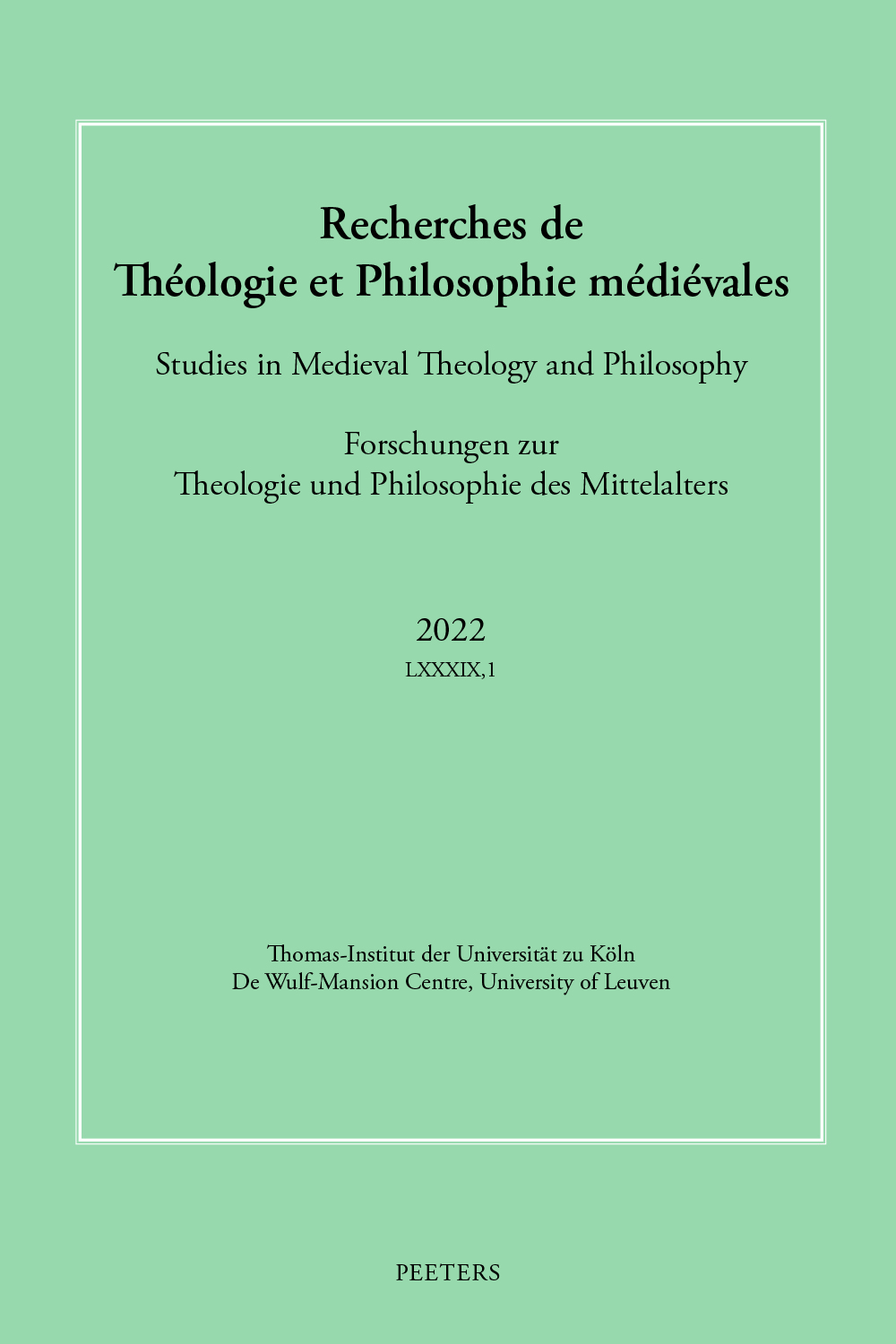 previous article in this issue previous article in this issue | next article in this issue  |

Preview first page |
Document Details : Title: Double Truth Subtitle: How Are We to Look at It? Author(s): GILETTI, Ann M. Journal: Recherches de Théologie et Philosophie Médiévales Volume: 88 Issue: 1 Date: 2021 Pages: 89-141 DOI: 10.2143/RTPM.88.1.3289285 Abstract : There is consensus among historians of medieval philosophy that the Double Truth was never held by late medieval scholastics. Double Truth is the position that conflicting philosophical and religious ideas are both true. It was denounced in the Condemnation of 1277 by the bishop of Paris, and criticised in Aquinas’s De unitate intellectus (1270). The consensus is based on accounts of Double Truth in these two sources, examination of scholastic texts potentially presenting Double Truth positions, and the Aristotelian definition of philosophical contradiction. However, close reading of the two sources does not support the definition of Double Truth used by historians. This article analyses the evidence, and proposes that we modify how we define Double Truth to account for a genuine historical phenomenon warranting the reactions of Aquinas and the bishop of Paris. It also suggests that we reconsider Boethius of Dacia and possibly Siger of Brabant as proponents of it. |
|


